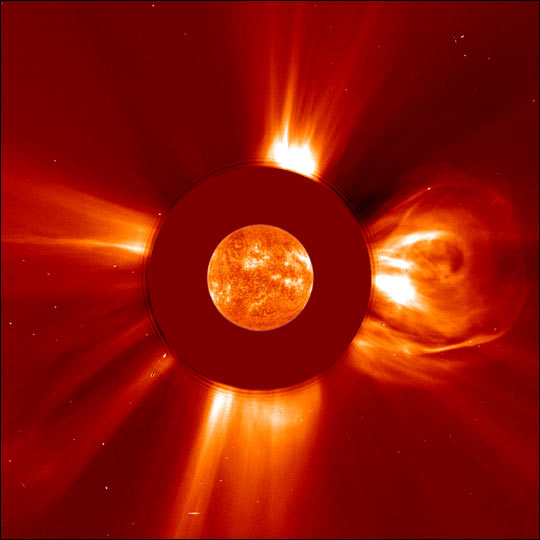Effects of superfast solar storm winds may be felt on Earth

TOPSHOT – The aurora borealis, also known as northern lights, illuminates the sky along the Ring Road in southeastern Iceland, between Jokulsarlon glacier lagoon and Hofn, on October 7, 2018. (Photo by Mariana SUAREZ / AFP) (Photo by MARIANA SUAREZ/AFP via Getty Images)
(NewsNation) — The effects of solar winds of up to 1.8 million mph carrying charged particles could be headed in Earth’s direction Thursday.
The winds would come from what weather experts have identified as a gigantic “coronal hole” on the sun’s surface — or cooler, less dense regions of the sun with open magnetic fields that thrust superfast solar winds out into space.
Detected on Nov. 28 by Space Weather Live, the storm particles are expected to have effects here on Earth, despite only receiving a G1 rating on a scale of 1 to 5 from Spaceweather.com.
“The gaseous material is flowing from a canyon-like hole in the sun’s atmosphere,” the sun and Earth news site said.
One possible effect, for example, is the chance for more auroras, as these solar storms, which are also known as geomagnetic storms, can attach themselves to and travel down the magnetic field lines at the North and South poles into Earth’s atmosphere.

That means the auroras in Earth’s Northern Hemisphere — the Aurora Borealis or the Northern Lights — and the auroras in the Southern Hemisphere — the Aurora Australis or Southern Lights — may very well be supercharged in the coming days.
“There remains a slight chance for visible auroras over the far north of Scotland where skies are clear,” the U.K.’s Met Office told the Daily Mail Wednesday.
Conversely, these charged particles could also affect Earth’s power grids, including increasing the drag on low Earth-orbiting spacecraft and giving satellites issues.
These types of storms — or “disturbances” — are common, especially as the sun is nearing the middle of its 11-year solar cycle. Only this time, the hole is huge and is facing Earth.
As NASA describes it, there is a new solar cycle every 11 years. During the course of each cycle, the sun’s magnetic poles flip, causing the sun’s surface to transition from “relatively calm to active and stormy.”
It then takes roughly another 11 years for the sun’s North and South poles to flip back again. Solar maximum is defined as the cycle’s peak; then, once the sun’s magnetic poles flip, the quiet period is known as “solar minimum.”
As the last solar minimum occurred in December 2019, the current adverse occurrences on the sun are indications of the transition back.

A worst-case scenario would be similar to one in 1859, when a massive geomagnetic superstorm known as “the Carrington event” sent a burst of magnetized plasma toward Earth, causing telegraph systems to malfunction, disrupting communications on the ground and setting off dazzling auroral displays.
According to a 2019 study by astrophysicists, however, the probability of the sun causing a storm strong enough to affect electrical and communication infrastructures around the globe again in the next decade only reaches 1.9% maximum, experts say.
While some reports predict the storm will reach Earth on Dec. 1, other projections indicate a Dec. 2 arrival.









